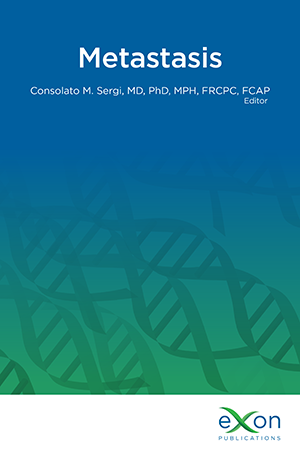Molecular Imaging of Brain Metastases with PET
Main Article Content
ABSTRACT
Molecular imaging of brain metastases with positron emission tomography with computed tomography (PET/CT) or with magnetic resonance imaging (PET/MRI) can be performed with a growing number of molecular imaging agents. The most commonly used molecular imaging agent for primary malignancies outside of the brain is a glucose analog radio-labelled with fluorine-18, 18F-fluorodeoxyglucose (18F- FDG), which can be used to identify brain metastases. Likewise, additional molecular imaging agents such as prostate specific membrane antigen (PSMA) ligands (i.e., 68Ga PSMA-11), alkylphosphocholine analogs (i.e., CLR124/CLR1404), and amino acids (i.e., 11C-MET, 18F-FET, 18F-DOPA, 18F-FACBC) can identify brain metastases. Advantages of PET in brain tumor imaging include co-registration with other imaging technologies, quantitative measurements, and significant potential for improvement in diagnostic accuracy. PET can be used to detect brain metastases while imaging for other sites of metastatic disease, discriminate treatment related changes from tumor recurrence, and identify patients for targeted radiotherapy from theranostic molecular imaging and targeted radiotherapy agents.
Downloads
Metrics
Article Details

This work is licensed under a Creative Commons Attribution-NonCommercial 4.0 International License.

